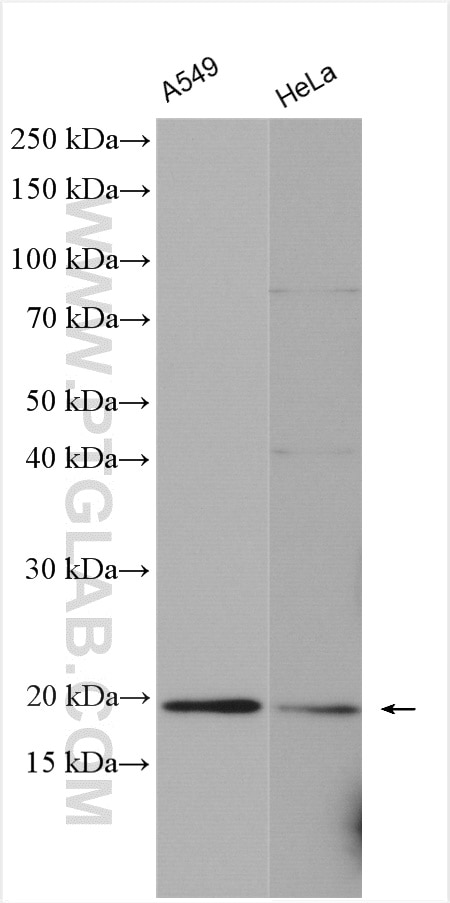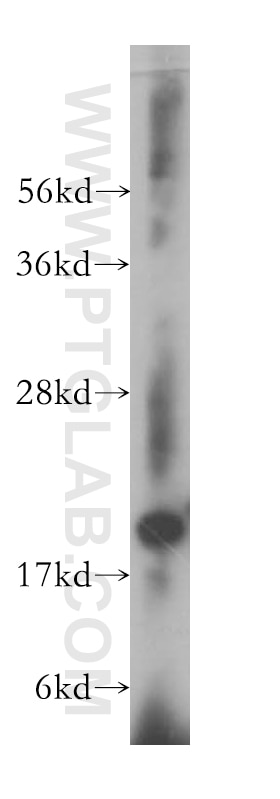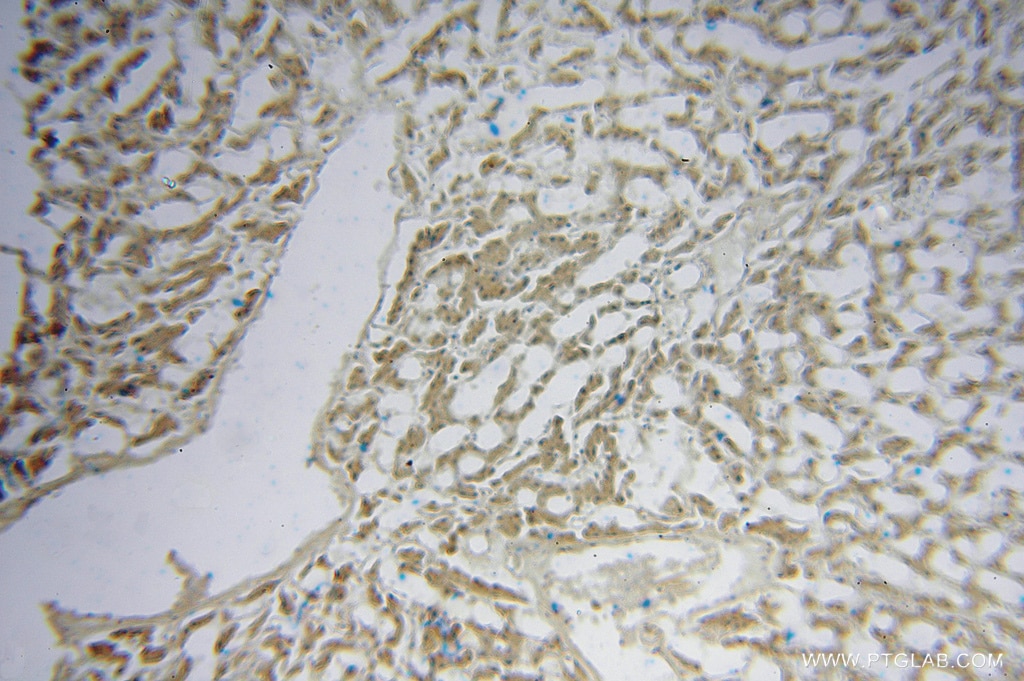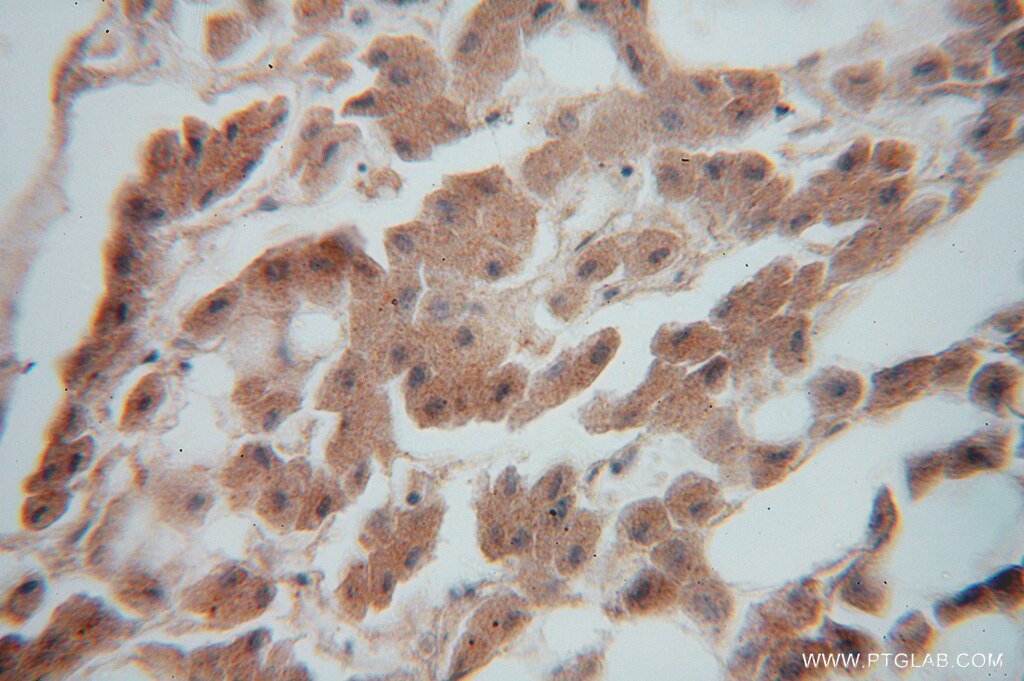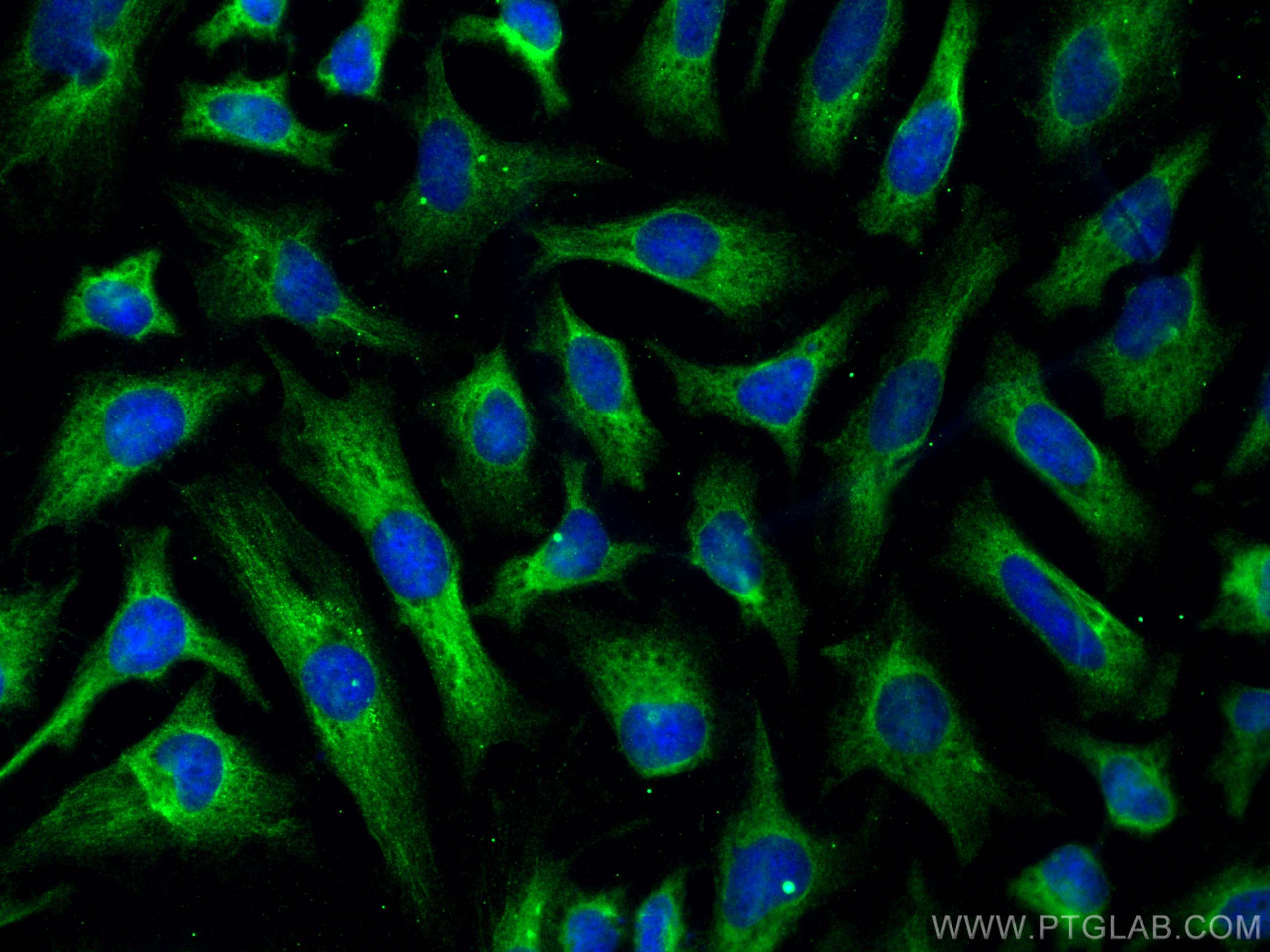NDUFS7 Polyklonaler Antikörper
NDUFS7 Polyklonal Antikörper für WB, IHC, IF/ICC, ELISA
Wirt / Isotyp
Kaninchen / IgG
Getestete Reaktivität
human, Maus, Ratte
Anwendung
WB, IHC, IF/ICC, IP, ELISA
Konjugation
Unkonjugiert
Kat-Nr. : 15728-1-AP
Synonyme
Geprüfte Anwendungen
| Erfolgreiche Detektion in WB | A549-Zellen, HeLa-Zellen, humanes Hirngewebe |
| Erfolgreiche Detektion in IHC | humanes Lebergewebe Hinweis: Antigendemaskierung mit TE-Puffer pH 9,0 empfohlen. (*) Wahlweise kann die Antigendemaskierung auch mit Citratpuffer pH 6,0 erfolgen. |
| Erfolgreiche Detektion in IF/ICC | HeLa-Zellen |
Empfohlene Verdünnung
| Anwendung | Verdünnung |
|---|---|
| Western Blot (WB) | WB : 1:1000-1:5000 |
| Immunhistochemie (IHC) | IHC : 1:20-1:200 |
| Immunfluoreszenz (IF)/ICC | IF/ICC : 1:200-1:800 |
| It is recommended that this reagent should be titrated in each testing system to obtain optimal results. | |
| Sample-dependent, check data in validation data gallery | |
Veröffentlichte Anwendungen
| WB | See 13 publications below |
| IHC | See 2 publications below |
| IF | See 3 publications below |
| IP | See 1 publications below |
Produktinformation
15728-1-AP bindet in WB, IHC, IF/ICC, IP, ELISA NDUFS7 und zeigt Reaktivität mit human, Maus, Ratten
| Getestete Reaktivität | human, Maus, Ratte |
| In Publikationen genannte Reaktivität | human, Maus |
| Wirt / Isotyp | Kaninchen / IgG |
| Klonalität | Polyklonal |
| Typ | Antikörper |
| Immunogen | NDUFS7 fusion protein Ag8471 |
| Vollständiger Name | NADH dehydrogenase (ubiquinone) Fe-S protein 7, 20kDa (NADH-coenzyme Q reductase) |
| Berechnetes Molekulargewicht | 213 aa, 24 kDa |
| Beobachtetes Molekulargewicht | 20 kDa |
| GenBank-Zugangsnummer | BC005954 |
| Gene symbol | NDUFS7 |
| Gene ID (NCBI) | 374291 |
| Konjugation | Unkonjugiert |
| Form | Liquid |
| Reinigungsmethode | Antigen-Affinitätsreinigung |
| Lagerungspuffer | PBS with 0.02% sodium azide and 50% glycerol |
| Lagerungsbedingungen | Bei -20°C lagern. Nach dem Versand ein Jahr lang stabil Aliquotieren ist bei -20oC Lagerung nicht notwendig. 20ul Größen enthalten 0,1% BSA. |
Hintergrundinformationen
NDUFS7(NADH dehydrogenase [ubiquinone] iron-sulfur protein 7, mitochondrial) protein is one of the most conserved subunits of mitochondrial respiratory chain complex I and plays a central role in the interaction with the electron acceptor ubiquinone and in the proton-translocating mechanism(PMID:15269216).Defects in NDUFS7 are a cause of Leigh syndrome (LS) and mitochondrial complex I deficiency (MT-C1D).
Protokolle
| PRODUKTSPEZIFISCHE PROTOKOLLE | |
|---|---|
| WB protocol for NDUFS7 antibody 15728-1-AP | Protokoll herunterladen |
| IHC protocol for NDUFS7 antibody 15728-1-AP | Protokoll herunterladenl |
| IF protocol for NDUFS7 antibody 15728-1-AP | Protokoll herunterladen |
| STANDARD-PROTOKOLLE | |
|---|---|
| Klicken Sie hier, um unsere Standardprotokolle anzuzeigen |
Publikationen
| Species | Application | Title |
|---|---|---|
Cell Res NDUFAB1 confers cardio-protection by enhancing mitochondrial bioenergetics through coordination of respiratory complex and supercomplex assembly. | ||
Mol Cell Maintaining Iron Homeostasis Is the Key Role of Lysosomal Acidity for Cell Proliferation. | ||
Cell Chem Biol Metabolic targeting of cancer by a ubiquinone uncompetitive inhibitor of mitochondrial complex I. | ||
Arch Toxicol SIRT3-dependent mitochondrial redox homeostasis mitigates CHK1 inhibition combined with gemcitabine treatment induced cardiotoxicity in hiPSC-CMs and mice | ||
Mol Cell Biol TRMT1-catalyzed tRNA modifications are required for redox homeostasis to ensure proper cellular proliferation and oxidative stress survival. | ||
Rezensionen
The reviews below have been submitted by verified Proteintech customers who received an incentive for providing their feedback.
FH Matthieu (Verified Customer) (09-24-2025) | Band visible at expected size
|
FH Manon (Verified Customer) (09-23-2025) | Good specific band
|
FH Emilie (Verified Customer) (07-23-2025) | Used for Western blot on human fibroblasts and gives a clear, well-defined band. I recommend this product.
|
